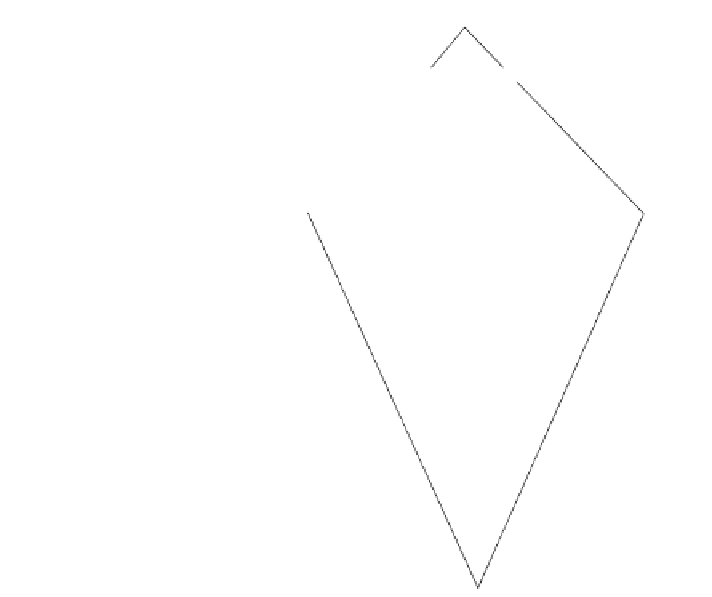Geology Reference
In-Depth Information
(2) Those, which contain plagioclase and/or K-feldspar and also crystallized under
low P(H
2
O) condition (melilite-free), and
(3) Those, which contain phlogopite and/or K-richterite, and are formed under
relatively higher P(H
2
O) condition (lamproites).
3.2.1 Kamafugitic Rocks Without Plagioclase
The term kamafugitic rocks have been coined by Sahama (1974) to those rocks
containing various combinations of olivine, augite, leucite, kalsilite and melilite.
The term refers to three rock types, katungite (olivine + melilite + leucite), ugandite
(olivine + augite + leucite, Fig.
3.6
) and mafurite (kalsilite + leucite + melilite). The
rare extreme variety of katungite without olivine is called proto-katungite. Potassic
dyke rocks occurring in Navajo-Hopi has been termed as katungites. These rocks
have mineralogy similar to those of katungite but lack modal kalsilite.
The potash ankaratrite
melaleucitite series have been considered by Sahama to
represent a sodic and potassic analogue of kamafugitic rocks, and they are
-
Fig. 3.6 Plot of bulk
compositions of katungite,
mafurite and ugandite
(kamafugitic rocks) in a
melilite-leucite
Nepheline
Potash ankaratrite
kalsite
diagram. Bulk compositions
of melaleucitite, leucite,
ankaratrite and potash
ankaratrite in a
leucite
-
Leucite ankaratrite
Melaleucitite
Leucite
nepheline
diagram is also shown in the
same
figure (after Sahama
1974)
kalisite
-
-
Kalsilite
UGANDITE
MAFURITE
KATUNGITE
Melilite





Search WWH ::

Custom Search